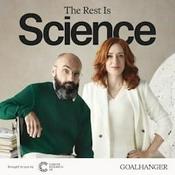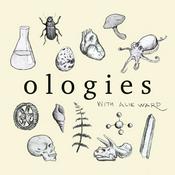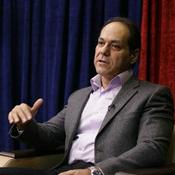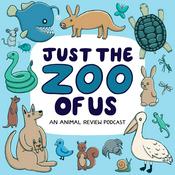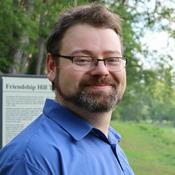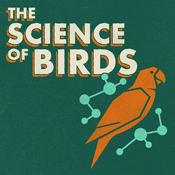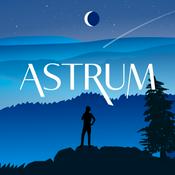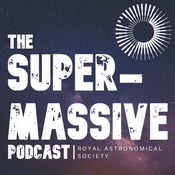71 episodes
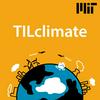
Update: Where we've been and where we're going
11/04/2025 | 15 mins.
We’re dropping into your feed to share the news that our founding host, Laur Hesse Fisher, is departing MIT and TILclimate. In this episode, Laur sits down with new host Madison Goldberg to talk about the philosophies that have shaped TILclimate over seven seasons and take listeners behind the scenes of the show. They also discuss what’s in store for season eight—because TILclimate isn’t going anywhere.Check out an extended video version of this conversation: https://www.youtube.com/watch?v=kB544MVZ9bgFor a deeper dive and additional resources related to this episode, visit: https://climate.mit.edu/podcasts/update-where-weve-been-and-where-were-goingFor more episodes of TILclimate by the MIT Climate Project, visit tilclimate.mit.edu. CreditsLaur Hesse Fisher, Founding Host and Senior EditorMadison Goldberg, Incoming Host and Associate ProducerAaron Krol, Writer and Executive ProducerDavid Lishansky, Editor and ProducerDanielle Simpson, EditorMusic by Blue Dot SessionsArtwork by Aaron KrolSpecial thanks to Brett Paci of MIT OpenCourseWare and to the folks at Giro Studio for their help producing this episode.

Transmission: Power to the people
7/10/2025 | 14 mins.
Power lines may not look as high-tech and inspiring as a wind turbine or a solar field. But as MIT’s Joshua Hodge explains, these lines—and the rest of the sprawling “machine” that is the transmission system—are critical for harnessing clean, cheap, reliable power. In this episode of TILclimate, we explore what we stand to gain from a bigger, better transmission system, and how we might make it happen.For a deeper dive and additional resources related to this episode, visit: https://climate.mit.edu/podcasts/e8-transmission-power-people.For more episodes of TILclimate by the MIT Climate Project, visit tilclimate.mit.edu. CreditsLaur Hesse Fisher, Host and Senior EditorAaron Krol, Writer and Executive ProducerDavid Lishansky, Editor and ProducerMadison Goldberg, Associate ProducerGrace Sawin, Student Production AssistantMichelle Harris, Fact CheckerMusic by Blue Dot SessionsArtwork by Aaron Krol

Cleaner air
6/12/2025 | 14 mins.
Here at TILclimate, we’re often asked about the health and environmental effects of materials in solar panels and batteries. But what if the greatest costs are the ones we’re already bearing—from the fossil fuels those technologies would replace? In this episode, pulmonologist Dr. Mary Rice explains how air pollution from coal, oil, and gas can make us sick, and why a cleaner energy system benefits both the climate and our health.For a deeper dive and additional resources related to this episode, visit: https://climate.mit.edu/podcasts/e7-cleaner-air.For more episodes of TILclimate by the MIT Climate Project, visit tilclimate.mit.edu. CreditsLaur Hesse Fisher, Host and Senior EditorAaron Krol, Writer and Executive ProducerDavid Lishansky, Editor and ProducerMadison Goldberg, Associate ProducerGrace Sawin, Student Production AssistantMichelle Harris, Fact CheckerMusic by Blue Dot SessionsArtwork by Aaron Krol

Dealing with dead batteries
5/29/2025 | 15 mins.
The world’s demand for batteries to power electric vehicles is growing at incredible speed. What will we do with all these batteries when they die? Dr. Linda Gaines of Argonne National Laboratory joins TILclimate to explain what batteries are made of, how we obtain those materials, and how we can get them back when the batteries reach the end of their lives—along with other options to make this industry less wasteful and more productive.For a deeper dive and additional resources related to this episode, visit: https://climate.mit.edu/podcasts/e6-dealing-dead-batteriesFor more episodes of TILclimate by the MIT Climate Project, visit tilclimate.mit.edu. CreditsLaur Hesse Fisher, Host and Senior EditorAaron Krol, Writer and Executive ProducerDavid Lishansky, Editor and ProducerMadison Goldberg, Associate ProducerGrace Sawin, Student Production AssistantMichelle Harris, Fact CheckerMusic by Blue Dot SessionsArtwork by Aaron Krol

Geothermal: Earth’s infinite clean power
4/17/2025 | 15 mins.
Deep beneath the Earth’s surface, a molten stew of metals radiates vast amounts of energy. Prof. Roland Horne, Director of the Stanford Geothermal Program, joins TILclimate to talk about the “geothermal energy” technologies that tap this underground resource for electricity, manufacturing, and home heating and cooling. He also shares the recent breakthroughs that have begun bringing this always-on, clean, renewable source of energy to new places and applications.For a deeper dive and additional resources related to this episode, visit: https://climate.mit.edu/podcasts/e5-geothermal-earths-infinite-clean-powerFor more episodes of TILclimate by the MIT Climate Project, visit tilclimate.mit.edu. CreditsLaur Hesse Fisher, Host and Senior EditorAaron Krol, Writer and Executive ProducerDavid Lishansky, Editor and ProducerGrace Sawin, Student Production AssistantMichelle Harris, Fact CheckerMusic by Blue Dot SessionsArtwork by Aaron Krol
More Science podcasts
Trending Science podcasts
About TILclimate
Listen to TILclimate, Sasquatch Chronicles and many other podcasts from around the world with the radio.net app

Get the free radio.net app
- Stations and podcasts to bookmark
- Stream via Wi-Fi or Bluetooth
- Supports Carplay & Android Auto
- Many other app features
Get the free radio.net app
- Stations and podcasts to bookmark
- Stream via Wi-Fi or Bluetooth
- Supports Carplay & Android Auto
- Many other app features


TILclimate
download the app,
start listening.

